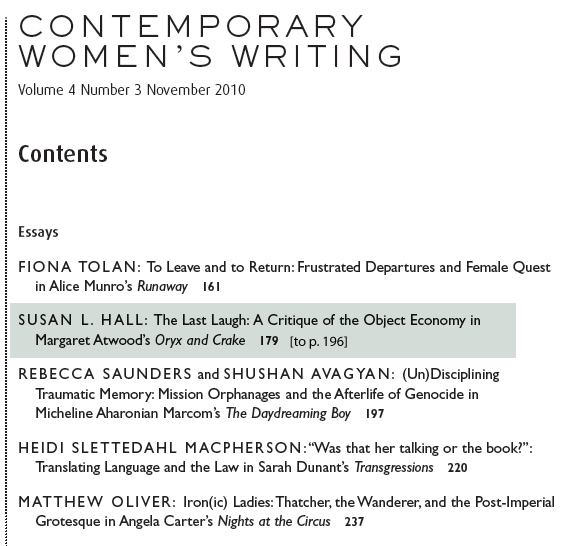Exercise 5: An Article in a Journal
An academic journal is a periodical that contains articles pertinent to a particular discipline or theme. A footnote to a journal article is similar in some respects to a footnote to an article in an edited collection, but there are some notable differences. The first citation to a journal article should identify the following information in the following format:
- Name of the article's author (followed by a comma)
- Title of the article (enclosed in single quotation marks, in full, with all principal words capitalised; followed by a comma but not followed by 'in')
- Title of the journal (in italics, with all principal words capitalised. Initial definite articles and subtitles are typically ignored)
- Volume number (in arabic numerals)
- Year of publication (in parentheses)
- First and last page numbers of the article (preceded by a comma but not by 'pp.')
- Page number(s) of the particular reference you are citing (in parentheses; preceded by 'p.' or 'pp.'; followed by a full stop)
So in citing a journal article you do not include 'in' or the 'pp.' before the page span. You also do not give editors' details, place of publication, or publisher (even when this information is specified by a journal). Many journals will include a part number and will specify the month or season of publication; this information can typically be ignored unless the individual parts of the journal are separately paginated.
So, if I wanted to cite an argument made across pages 27-32 of the following article, the footnote would be presented as:
Peter Conradi, 'Iris Murdoch and Wales', Transactions of the Radnorshire Society, 75 (2005), 26-34 (pp. 27-32).
Exercise

For this exercise, imagine you wanted to cite page 190 of the article highlighted in the above image:
Correct footnote:
Your footnote above, should look like this:Susan L. Hall, 'The Last Laugh: A Critique of the Object Economy in Margaret Atwood's *Oryx and Crake*', *Contemporary Women's Writing*, 4 (2010), 179-96 (p. 190).In your own work, the same footnote would look like this:
Susan L. Hall, 'The Last Laugh: A Critique of the Object Economy in Margaret Atwood's Oryx and Crake', Contemporary Women's Writing, 4 (2010), 179-96 (p. 190).
Comment:
There is no standard format for the opening pages of journals, and the above example from Contemporary Women's Writing is by no means typical. All the information you need will, however, be prominently displayed.
While some journals will give the volume number in roman numerals, your footnotes should always give it in arabic numerals.
For this journal we have not included the part number (3) or the month of publication (November), as the parts of the journal are not separately paginated (you can tell this as the first article in this part begins on p. 161).
Many journals exist in hardcopy and can be consulted in academic and institutional libraries. Many journal articles are also made available electronically, through databases such as JSTOR and Project Muse. As these databases provide identically paginated copies of journal articles, you can reference an article you've read electronically in exactly the same way you reference an article you've read in hardcopy (as above). For a discussion of referencing web-only journals and resources, see the 'Advanced Tutorial': Citation of a Web Resource and Exercise 2: Another Web Resource.

